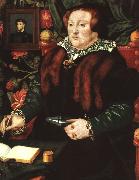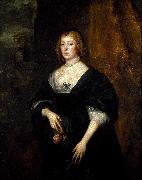Wholesale Oil Painting No Minimum |
|||||||||||
|
|
|||||||||||

|
|||||||||||
|
|
|
||||||||
Hans EworthFlemish Northern Renaissance Painter, active 1540-1573 Flemish painter, active in England. Jan Euworts was listed in 1540 as a freeman of the Guild of St Luke in Antwerp, but by 1545 he had moved to England, where until 1571 his name, spelt in a wide variety of ways (e.g. Eeworts, Eottes, Euertz, Evance, Eworts, Ewotes, Ewout, Ewoutsz., Eywooddes, Hawarde, Heward, Huett etc), appeared in numerous naturalization, tax and parish documents. About 35 paintings are generally attributed to him, consisting primarily of dated portraits of the English gentry and nobility. The majority are signed with the monogram HE, which led to their being attributed to the Flemish painter Lucas de Heere during the 18th and 19th centuries. Cust reattributed the paintings to Eworth on the basis of an inventory (1590) of the collection of John, 1st Baron Lumley, in which three monogrammed portraits were listed as being by Haunce Eworth |
||||||||
|
|
||||||||
Lady Dacre
Lady Dacre Painting ID:: 1159 |
1554
National Gallery of Canada, Ottawa 1554 National Gallery of Canada, Ottawa |
|||||||
|
|
||||||||
Anthony Van DyckDutch 1599-1641 Anthony Van Dyck Locations Flemish painter and draughtsman, active also in Italy and England. He was the leading Flemish painter after Rubens in the first half of the 17th century and in the 18th century was often considered no less than his match. A number of van Dyck studies in oil of characterful heads were included in Rubens estate inventory in 1640, where they were distinguished neither in quality nor in purpose from those stocked by the older master. Although frustrated as a designer of tapestry and, with an almost solitary exception, as a deviser of palatial decoration, van Dyck succeeded brilliantly as an etcher. He was also skilled at organizing reproductive engravers in Antwerp to publish his works, in particular The Iconography (c. 1632-44), comprising scores of contemporary etched and engraved portraits, eventually numbering 100, by which election he revived the Renaissance tradition of promoting images of uomini illustri. His fame as a portrait painter in the cities of the southern Netherlands, as well as in London, Genoa, Rome and Palermo, has never been outshone; and from at least the early 18th century his full-length portraits were especially prized in Genoese, British and Flemish houses, where they were appreciated as much for their own sake as for the identities and families of the sitters. |
||||||||
|
|
||||||||
|
|
Lady Dacre
Lady Dacre Painting ID:: 96754 |
Oil on Canvas. 50 x 40 in. (132 x 105.5 cm).
Date 1633(1633)
cyf Oil on Canvas. 50 x 40 in. (132 x 105.5 cm). Date 1633(1633) cyf |
||||||
|
|
||||||||
|
Anthony Van Dyck Dutch 1599-1641 Anthony Van Dyck Locations Flemish painter and draughtsman, active also in Italy and England. He was the leading Flemish painter after Rubens in the first half of the 17th century and in the 18th century was often considered no less than his match. A number of van Dyck studies in oil of characterful heads were included in Rubens estate inventory in 1640, where they were distinguished neither in quality nor in purpose from those stocked by the older master. Although frustrated as a designer of tapestry and, with an almost solitary exception, as a deviser of palatial decoration, van Dyck succeeded brilliantly as an etcher. He was also skilled at organizing reproductive engravers in Antwerp to publish his works, in particular The Iconography (c. 1632-44), comprising scores of contemporary etched and engraved portraits, eventually numbering 100, by which election he revived the Renaissance tradition of promoting images of uomini illustri. His fame as a portrait painter in the cities of the southern Netherlands, as well as in London, Genoa, Rome and Palermo, has never been outshone; and from at least the early 18th century his full-length portraits were especially prized in Genoese, British and Flemish houses, where they were appreciated as much for their own sake as for the identities and families of the sitters. Lady Dacre Oil on Canvas. 50 x 40 in. (132 x 105.5 cm). Date 1633(1633) cyf |
||||||||
|
|
||||||||
|
Prev Next
|
||||||||
|
|
||||||||
|
Related Paintings to Anthony Van Dyck :. |
||||||||
|
|
||||||||
|
CONTACT US |


